**Please Note: Due to a technical difficulty the Exploring with a Camera button is no longer linking to the correct page. Please get the new button code at the bottom of this post, and replace your old button.**
I love color in photography. I love the energy and emotion you can convey through color. There is a peaceful beauty in black and white, but there is so much richness and depth in color! For the next month in Exploring with a Camera we are going to look at color. Using the color wheel as a guide, I'm going to take a look at how colors work together and how you can use that to create photographs with beauty and impact.
I was browsing a used bookstore with this topic in mind and came across the Color Workbook by Becky Koenig. What a great find!
Yes! Color is life enhancing. How you see, use and portray color in your photographs is part of your eye. We may not understand why certain color combinations work to create the feel they do in our images, but there is a science and study of color that can help explain it. Let's start with the basic color wheel.*
Color is both a physical and an emotional human phenomenon. We respond to color because of its associations. We each have our personal preferences for particular color combinations. Our experience of the world is in some ways characterized by our observation of color: a green apple, a red sports car, the pink sky of a sunset, the blue of a robin's egg. These colors evoke not only an outward experience but also form colors in our memory, our inner eye. Color is not simply a decorative element in art, but a part of our inner consciousness. Color is life enhancing.
The idea behind the color wheel is that color is a continuum. You start with the primary colors, Yellow, Red and Blue. These mix to form the secondary colors, Green, Orange and Violet (Purple). There is an intermediate color that comes from mixing a primary and secondary, noted by two letters such as "RV" for Red-Violet. These twelve colors, 3 primary, 3 secondary and 6 tertiary, form the basic color wheel. The remainder of the colors come from mixing these 12 in various ways or with neutral colors - black, white, brown. Using this as a base, we can explore the different color combinations.
Now, I don't anticipate that in our photography we are going to go around with a color wheel looking for color combinations before we take a photograph most of the time. Looking at the color wheel relative to our photographs or those of others can help us understand how and why certain color combinations works. It can help us identify what we use most often and respond to in our images. That study will inform our images at the time of capture in the future. We may be more in tune with color and how to use it the next time we go to shoot.
To start us off in Part 1 of this study today, we are a going to look at the simpler color schemes or "harmonies" as the Color Workbook calls them.
Monochromatic
The first color harmony is the simplest, monochromatic or one color. You may need to reset your definition of "monochromatic" a bit, because in photography "monochromatic" often refers to black and white or images with a single tone, like sepia. This type of image is certainly monochromatic, but let's look at monochromatic color.
I use the monochromatic color harmony a lot. It creates a unified and cohesive image. My favorite pink shutter and wall in Burano is a good example of a monochromatic color scheme. All shades of Red-Violet, with accents that are neutral in the shutter holder and the board behind the peeling paint.
Another favorite monochromatic image is this door handle and lock from Greece. You can see in both of these images how framing a small portion of a larger scene can lead to a monochromatic image.
Framing a small portion is not the only way to get a monochromatic image, however. Another favorite from Greece shows an image that is primarily monochromatic, with the blue door, sink and gas can. There is a tiny pop of red in the faucet, but the rest is neutral and the overall color impression you have in this image is "blue."
This monochromatic image, from Burano, is green. Again, it's not all green, but the image is primarily shades of green and the remainder is neutral.
Monochromatic color schemes are great in our photographs because they can unify multiple diverse elements, as in the example of the door and the chair above. Monochromatic schemes can also help to convey a third element, like texture, as seen in the shutter and door handle. Just remember - monochromatic doesn't mean only black and white. There is so much energy and emotion to be added to an image with color!
Analogous
Moving into a slightly more complex color harmony from the color wheel, when you take two or three neighboring colors on the wheel you have an analogous color scheme. Analogous color schemes always have at least one color in common. In the diagram below, the common color is orange.
I see analogous color schemes in my images a lot, mainly in the red-orange-yellow part of the color wheel. This window in Switzerland is a great example. The grey and green serve the purpose of neutral and we see mostly the yellow and orange of the pots and window frame.
Nature is the best at creating analogous color schemes! These flowers, found in the Nice flower market, are a good example. The flowers themselves, highlighted in that beautiful light, create a lovely analogous image.
Designers use color schemes in advertising all the time to catch our eye! The analogous red-orange found in this window display is a good example. The bright, unified color along with the shiny baubles really caught my eye.
You can see how much I use the yellow-orange-red part of the wheel! That just reflects my personal color preferences. The analogous schemes you find might be in a completely different part of the wheel. Here is another analogous image, this time with blue and green. The green you see is more toward blue than yellow, which leads to a harmonious color image.
Chromatic Gradation
Expanding to include more colors on the color wheel leads to a chromatic gradation. This is where you move through a range of several colors in sequence along the color wheel. The diagram below shows a gradation from blue to red on the wheel, encompassing violet.
These flowers from Barcelona use a chromatic gradation. From red to yellow on the color wheel, also covering oranges and pinks. It is still a unified color scheme, but a bit more dynamic than a monochromatic or analogous.
The lead-in image of the post, from the Corvallis Saturday Market, uses a progression from red to yellow as well. Another market scene, from Padua below, has a color progression from red all the way to yellow-green on the the color wheel.
Do you see how much I like the yellow-orange-red part of the color wheel? It shows up again and again in my images! I will have to look for some other examples this week to see what I can find.
The Color Wheel, Part 1 Summary
The color schemes we're looking at for this exploration are harmonious and peaceful. They are easy on the eye, because of the way they relate to the other colors on the color wheel. Just a quick recap:
- Monochromatic - Images have one dominant color from the color wheel. You may see variations in the shades of that color, have neutrals or even small amounts of other colors, but the overall impression is of one color in the image.
- Analogous - Images have two to three colors adjacent colors on the color wheel. There is one color in common, and the other colors used have some small amount of that color.
- Chromatic Gradation - Images have a number of colors that can be found in sequence on the color wheel.
For the next two weeks, take a look through your archives or keep an eye out as you photograph for these three color schemes. You can link your images below or share in the Flickr pool for a chance to be featured on the blog. Visit the links shared by your fellow participants to see more color schemes. Since we all have different color preferences, it will be interesting and fun to see how we all view the world in color!
FYI - Links will be moderated. Please use a permalink, ensure that your linked image is on topic, and include a link back to this site in your post through the Exploring with a Camera button (available here) or a text link. Thanks!
*The basic color wheel image is by Eyoungsmc and is used here by creative commons license. All notations added to the color wheel image are mine.
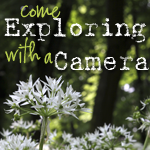 Copy and Paste Code |

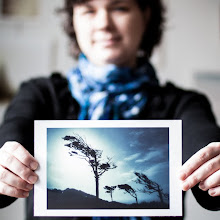






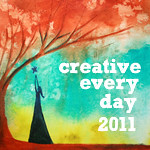



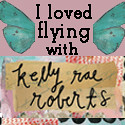





















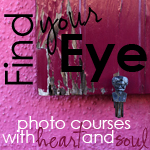


I am going to start paying attention for sure, as I think I am drawn to monochromatic, but tend to shoot more gradation.
ReplyDeleteDoes that make sense? I need to take more time and pay attention. Thanks to you I am.
So clearly explained! I will be so much more mindful of the colors I choose and prefer! Thanks!
ReplyDeleteExcellent lesson Kat... one we should all keep in mind.
ReplyDeleteWonderful topic, Kat....I am so excited to dive into color exploration with you! Your tutorial is such a helpful review, and I love your examples, of course.
ReplyDeleteGreat idea!!! And great educational post. This is going to fun and challenging!
ReplyDeleteI love this posting! It's simply wonderful, with great pictures!
ReplyDeleteAnother great book that I'm using a lot currently is Color Works by Deb Menz. It's more about the effect of colour on different types of fabric and yarn but it's fascinating. You must have a huge stash of photos to be able to illustrate all these colour combinations so beautifully!
ReplyDeleteWow Kat this is such a great post. I've been doing photography almost my whole life and have a bunch of great photo's but I never realized WHY I was choosing certian shots! This is fascinating relating it to the color wheel! I love the quote you put in from the used book you found ( what a treasure!)I wish I had time to join the photo blog activities but I'm barely keeping up with PPF and my day job, lol!I'm going to deffinetly "lurk" on this site though, this is really cool stuff! Deb
ReplyDeleteDidn't know until just now that you were 'doing' colour this week.
ReplyDeleteThis post made me realize that I am very uncomfortable with my colours at the moment. My last three posts, 15th, 197h and 20th Sept. show how ill at ease I am with colour. I didn't realize until reading this how I am struggling. My submitted entry was not a deliberate attempt to come to grips with it. Still, I can now see it doesn't feel right, but can't really fix it.
Both your bicycle post and the color post are excellent ~ 1st one is delightful and the 2nd is very informative and thanks for hosting this link up ~ namaste, Carol (A Creative Harbor)
ReplyDeleteI love colors and if you can see our home, I think I've overdone it with the color scheme. lol. It's a lot - my living room lives on three colors (and that's just the wall, but I think it worked really well. Anyway, I'm trying to downsize this analogous nature of mine on colors. Thanks for the drop! Love your themes for Exploring with a Camera!
ReplyDeleteSuch a great tutorial.. thank you so much!!
ReplyDeleteHugs, Linda
I enjoyed this challenge - it was challenging seeking out my favourite colour scheme. You really got me thinking with this one Kat.
ReplyDeleteThese are gorgeous, Kat! I really LOVE that door latch. WOW.
ReplyDeleteI was never really 'looked' at colors this way. Great post!
ReplyDeleteHi.
ReplyDeleteIve just found your great colour post.. I will follow your blog now as i think i will learn alot from you! Im also doing my second photography course at college so Im sure this post will come in handy for reference and inspiration.
Im also participating now in the Scavenger Hunt Sunday -- thats where I stumbled upon your blog link.
jennie x